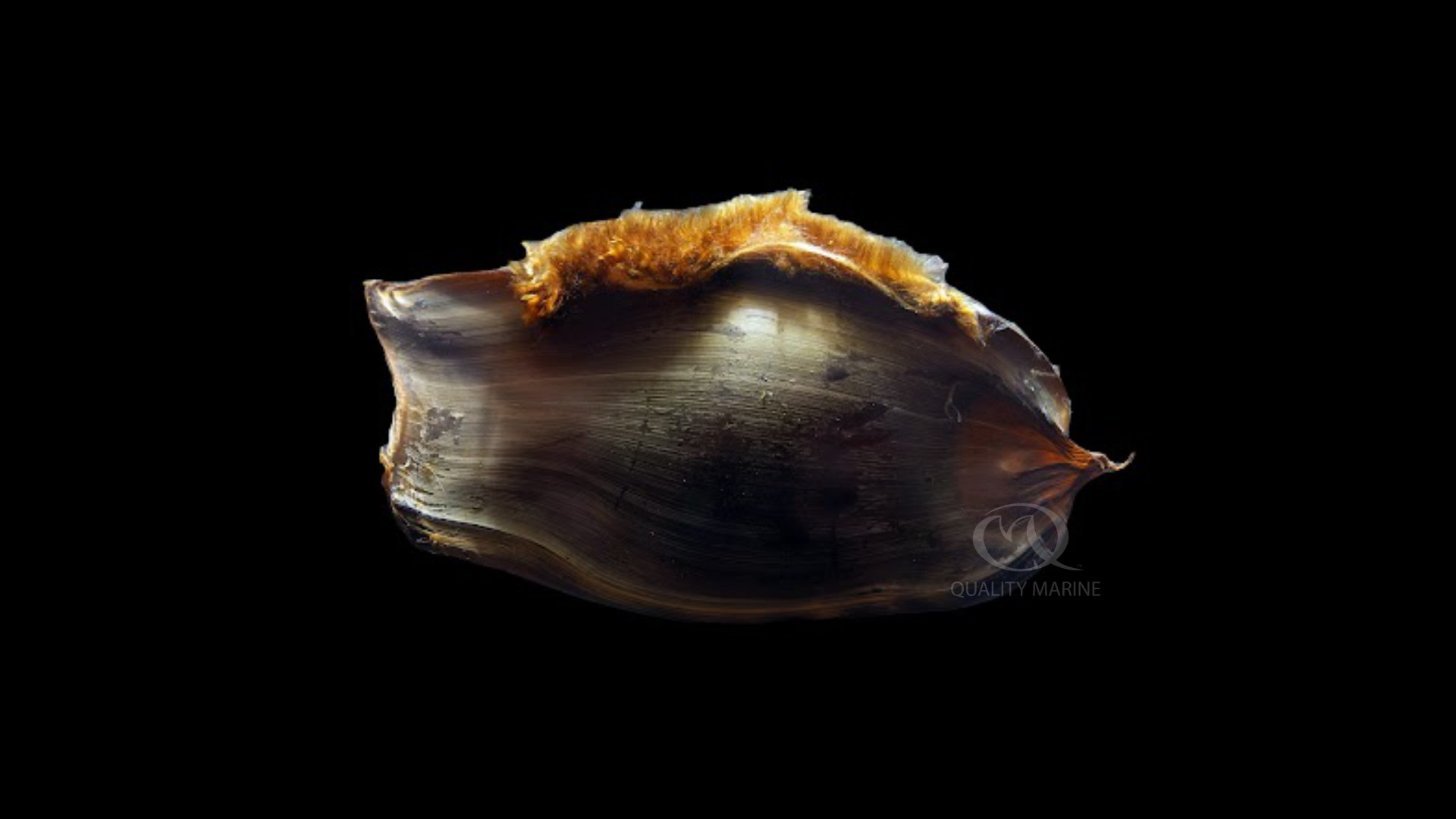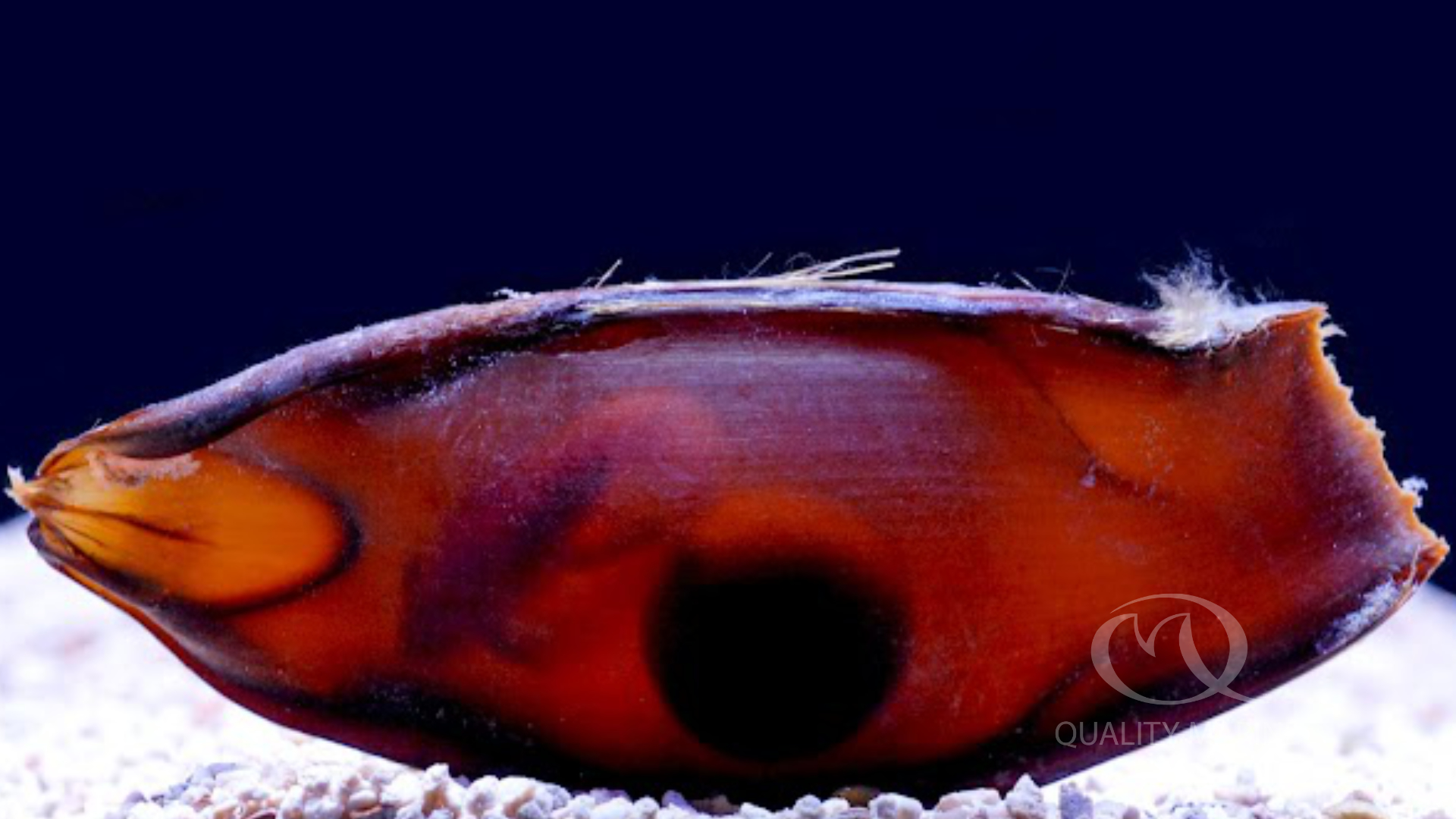Opening the Mermaids Purse

On a walk through your Local Fish Store (LFS), you've noticed a small, tan to brown pouch in the upper corners of a display tank. They are usually separated from the other fish in an acclimation box. If you look closely at this pouch, you'll realize that it is very slightly translucent; looking into it you'll notice a very small shark, attached to a yolk sack, wiggling around! These are called a “Mermaid's Purse” but are actually the eggs of a group of small sharks, belonging to 10 or 11 species and two genus, usually either Hemiscyllium or Chiloscyllium. It is pretty much impossible to tell what species until they hatch.
The largest of these species could feasibly reach nearly four feet long. A much more common adult size is around 30 inches long for males and 25 inches long for females. Regardless of sex these sharks can live for 20 to 25 years in captivity. When hatched, these sharks will be around five to seven inches long and could be happily kept and monitored in a tank as small as 40 gallons. Obviously, in maturity, even the smallest sharks available to you as hobbyists will require a massive tank, or even a saltwater pond, in excess of 300 gallons.
If you're up for this challenge, hatching these eggs is very straightforward. Take them home and treat them like you would any other marine fish in regard to transport and acclimation. We suggest separating them from the aquarium population at large (assuming you have other fish / inverts) by keeping the egg in an acclimation box, similar to the one that it almost certainly was in at the LFS. The next steps are just water quality diligence and time. These eggs can take from four to six months to hatch from the time they are laid; more frequently, these eggs will have been maturing before they get to the LFS and your hatching timeline will more likely be one to two months. In regard to water quality, it should be excellent, and very stable. All the species, your egg will need water that is between 75 and 80 degrees, pH should be stable between 7.8 and 8.2 and there should be only trace levels of nitrate. There should be enough flow to keep well oxygenated water circulating around the eggs, but not so much that the egg gets constantly jostled. Lighting isn't relevant.
If you've executed all this well, and had a viable shark egg to start with, there will come a day where there is a baby shark swimming around in the container that housed the egg. You can use a flashlight to shine light through your egg to watch your shark developing. As it gets bigger, the yolk sac it is living off of will shrink correspondingly. When the sac shrinks to nothing your shark will be ready to hatch and it this should happen on its own; the egg sac can be gone for a week, or even two before the shark frees itself. Eons of generations of sharks have hatched themselves from these eggs without human intervention. This being said, baby sharks can get stuck at this last stage.
In part because of the time investment, or financial investment, or because hobbyists only have one (or even a few eggs), they often don't want to risk their baby shark getting stuck in the egg at this late stage and so they assist their hatching. We suggest letting this process happen naturally, however, if your shark's yolk sac has been gone for more than two weeks, you might consider helping it out. There are a myriad of videos online about doing this, but in short, you are going to take a very sharp scissors and sterilize them in alcohol. Next you are going to gently push the baby shark down to one end of the egg by compressing one end between your finger and thumb. Make sure this process is happening underwater. With your baby shark safely out of the way, take your scissors / shears and cut off the end of the egg that doesn't have the shark in it. Once this is done, you can (again, gently) open up that end of the egg with your fingers and your baby shark should come swimming out in no time! Watch some videos, to learn the technique as well as you can, breathe deep and be gentle.

Getting shark eggs, and hatching shark eggs is generally just a matter of diligence and patience. The most challenging part of raising baby sharks is getting them to start eating. In the wild, sharks from the genus Hemiscyllium or Chiloscyllium eat mostly small invertebrates like shrimp, worms, crabs and small fish. In your aquarium we suggest starting with very small shrimp like mysis and krill, pieces of small, chopped silversides or other marine fish. A variety of food is important, and so don't stick to one kind of food. Whatever you feed, it should be sized for the baby shark to eat it in one bite. Baby fish should be fed until they stop eating, once a day. Once they are a couple months old, you can start to slow this down to every other day, and by the time they are six months old, you can start to feed them every few days or a couple times a week. Monitor them as you slow down feeding. If they seem to get skinnier, ramp feedings back up for a while. We strongly suggest starting to feed them off a feeding stick right from the beginning as you are conditioning this animal to a food trigger. As they grow, it could put you at risk to have them associating your fingers with feeding time. The first couple weeks are the most challenging for getting these baby sharks to eat. Some hobbyists report having good luck feeding them live ghost shrimp from their LFS. These can get some food in your fish, but they are nutritionally poor, so don't rely on them long term.
As your shark grows, it will get quite strong. They do not need much (or any) rock work, preferring open design, which is good because they can undermine rockwork, bringing it crashing down. Utilize minimal rocks, that are well supported and don't interrupt the open bottom of the display. Soft sand should also be used for small sharks as their baby bellies are soft and course substrates can irritate them. Open bottom aquariums are also good choices and are easy to keep clean. Your sharks can be kept with other fish, but you should avoid large eels which could easily eat your baby shark. Also avoid Puffers and Triggers which have a penchant for picking on sharks. The sharks will eat most small fish or inverts that they can catch, though some specimens will not bother cleaner shrimp. They are unlikely to pick at corals but may knock them over.
Hatching shark eggs is one of the most rewarding things a saltwater hobbyist can do. Our partnerships with many public aquariums around the world facilitate our being able to offer to you the aquacultured eggs that these facilities remove from their displays. As are result, we are frequently able to actually know and thus be able to inform you as to the species of shark that laid the eggs! This would be basically impossible with a wild harvest egg! If you have the aquarium size (or saltwater pond – how cool would this be?!?) and the patience for the job, you should head to your LFS and ask them about getting you a shark egg from Quality Marine!